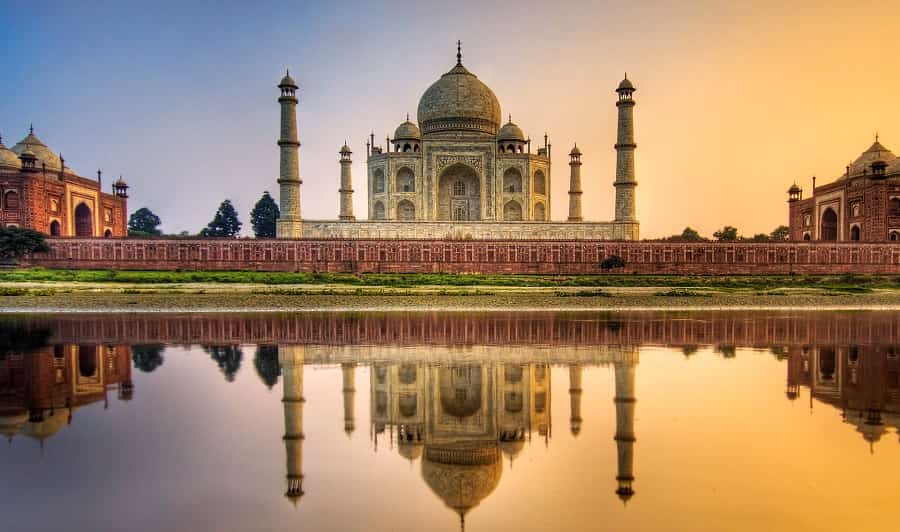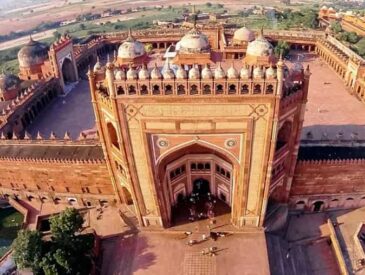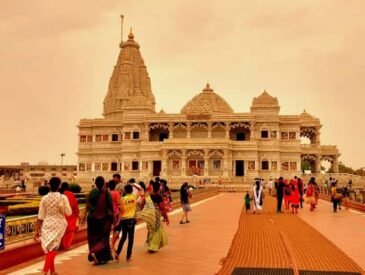According to History, The Taj Mahal is considered as the fabulous and famous buildings of indo Islamic design around the world. According to the history of Taj Mahal, It has been listed in 1983 in the Heritage list of United Nations Educational, Scientific and Cultural Organization (UNESCO).
Brief History of Taj Mahal Agra
The Taj Mahal is located in Indian city of Agra. Agra is the Northern State of UP (Uttar Pradesh) India. Taj Mahal Agra is the most visited historical monuments in India. According to the history of Taj Mahal Shah Jahan, The Mughal Emperor, built the Taj Mahal as a mausoleum for his fourth wife, Mumtaz Mahal. The construction was commenced in the year 1631. The time of completion is today not clearly known. Old records by historians of the time placed the completion of building in the year 1644. An engraving over the main gate of building, which calls in 1648 as year of finish contradicts. The Indian State UP celebrated the 350th ceremony of completion of the construction project in September 2004. As this date to the one nor the other saw the end date, local media assumed that celebrations would have obeyed the purpose of the revival of tourism..
Brief Information of Taj Mahal India
The Taj Mahal is a mausoleum of enormous proportions. The grave mosque is on 100 by 100-meter floor made of marble. The church is 58m high and 56m wide. Four minarets are designed around the main building covered with a cranium, which presents a slight slope angle. The history of Taj Mahal India states that The creators of that time wanted to dodge in this way that the pillars during an earthquake on main building breakdown. A mosque on Western side of Taj Mahal is regulated to Mecca. A visitor house is located on East side of the monument with the same floor plan. Since Taj Mahal is an 18-hectare garden, which Center is an oblong pool of water. The guests in the trimmed gardens can stroll to both sides. There are majestic tombs which it, however, is not the actual funeral sites in the central room of the Taj Mahal. There are so-called Bill Graves. The single held grave sites are placed in the crypt below this range.
The balanced dimensions and the melodic lines of the Taj Mahal are striking. This external pattern continues in the Interior. The construction of the influence object included more than 20,000 workers from all parts of Central and South Asia in the 17th century. More than 1,000 elephants were brought up the building materials from all areas of India. The different valuable and semi-precious stones which were inserted into the marble bear witness to the high craftsmanship. A total of 28 different varieties were counted. An accomplished fusion of Persian architectures with elements of Indian planning was the architect with the Taj Mahal. As per history of Taj Mahal, In 1904, the mausoleum was put under monument protection by the former British harsh rulers. The once luxurious gardens were in 1908 on behalf of the British Governor-General in India Lord Curzon “restored” and mainly replaced with lawns..
History of Taj Mahal india | Final Words
The Taj Mahal is a traveler attraction for visitants from all over the world today because of its high art – and cultural-historical importance. The UNESCO World Heritage site is also used by parts of the Muslim religion as a place of prayer. Newly married Indian couples go to the mausoleum, to encourage their love permanently. In 2006, bomb threats against the Taj Mahal led to a tightening of protection measures by the Indian governments. Since then, can enter the building through a redemption gate and no liquids are allowed to do more. Drinking water is excluded from this provision.
As per the history, Taj Mahal is influenced strongly by corrosion by industrial air pollution. This fact is revealed in a yellowish coloring of the whole building. Vehicles and cars may approach the mausoleum only for maximum two Km’s for this reason. Many legends are encircling the history of Taj Mahal Agra. The myth is one of the eeriest stories that was done after completion of construction all architects and a hand chopped off the artists, to prevent a duplicate of the building by other rulers..
- Check out: Trip to Taj Mahal from Delhi




